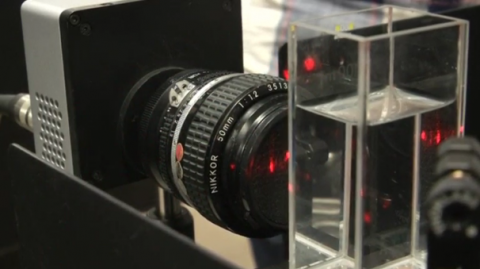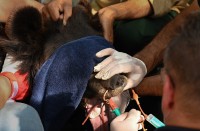
LUND, Sweden (Reuters) — A super-fast ‘camera’ developed at Lund University can capture on film processes in chemistry, physics, biology and biomedicine, that until now have proved impossible. It’s been called the ‘world’s fastest camera’, capable of filming at a speed equivalent to five trillion images per second.
The device consists of an off-the-shelf camera, lasers, and mirrors.
“The camera we’re using is extremely slow. But we have figured out a way so that we can record several images in one image, so we can acquire an entire video sequence in one shot,” co-creator Elias Kristensson told Reuters.
Present high-speed cameras capture images one by one in a sequence. The technology developed by Kristensson and co-creator Andreas Ehn is based on an algorithm and captures several coded images in one individual photograph, arranging them into a video sequence afterwards.
“We take all four images in one photograph and then we divide them afterwards in a computer and arrange them in a movie,” explained Ehn.
The pair have called the technology Frequency Recognition Algorithm for Multiple Exposures (FRAME).
Their method involves exposing what’s being filmed to laser flashes. Each light pulse is given a unique code and the object reflects those flashes, which merge into a single photograph. After filming they are separated using an encryption key.
The camera is intended to help scientists gain better insight into rapid processes occurring in nature, many of which take place on a picosecond and femtosecond scale.
“We regard this mostly as a tool for scientists that want to be able to study ultrafast phenomena in their laboratories. We don’t think that it will be used by ordinary people in their homes,” said Kristensson.
The research pair’s expertise is in combustion and they say their work could help in the production of next-generation car engines, gas turbines and boilers – making them cleaner and more fuel-efficient.
Kristensson says the camera could become many times faster.
He said: “We’ve not actually reached the limit of how fast you can record things. Many facilities have faster lasers, such as attosecond lasers. That means they could actually reach frame rates about a thousand times faster.”
A German company has taken on the prototype, which could be available commercially within two years.







